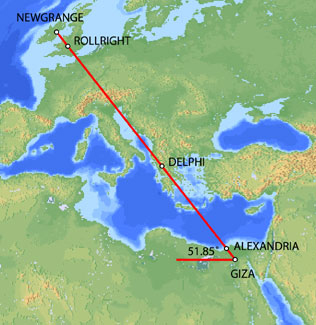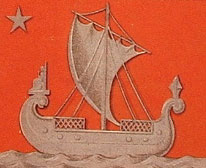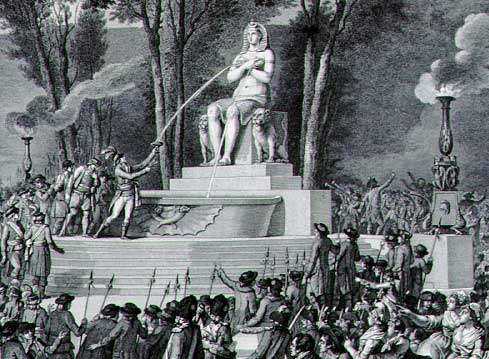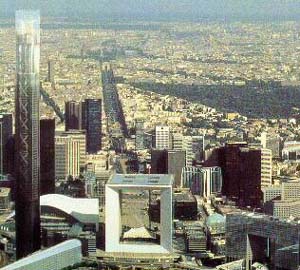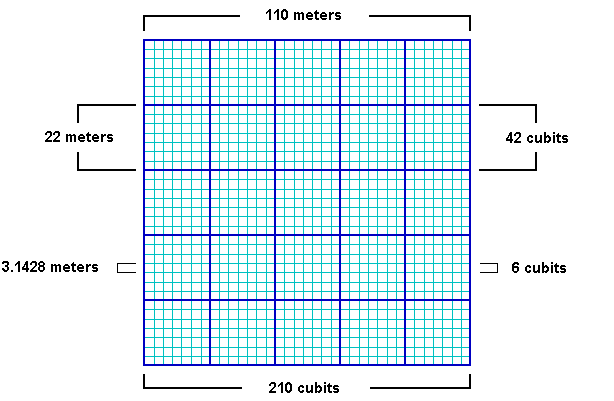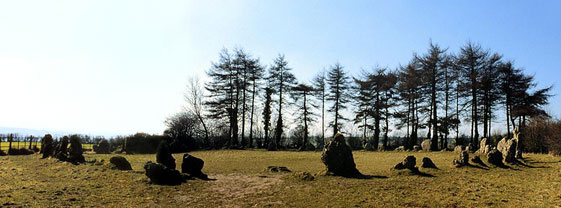As mind-boggling as the first lunar landing was, Columbus’ feat was its equal or better in terms of the magnitude, danger and significance.
On July 20, 2019, much of the world will be commemorating the 50th anniversary of the first moon landing by American astronaut Neil Armstrong.
The event has been celebrated in the movie “First Man,” which opened last year on Oct. 12, the true anniversary of the discovery of America by Christopher Columbus.
Without diminishing Armstrong’s incredible ride and personal courage, Columbus’s feat would equally deserve the title “First Man.” Unlike Armstrong, he did not travel into the void of space, accompanied by fanfare and TV cameras, but made four voyages across the Atlantic to the “New World,” which easily equalled if not exceeded the magnitude, danger and significance of the first moon walk.
In both cases, these adventurers knew well in advance the challenges their respective journeys would entail. Columbus was 41 years old at the time of his first voyage to America and an experienced navigator. Born in the seaport of Genoa, Italy, in 1451, he wound up on the shores of Portugal at age 26 after barely surviving a naval battle with pirates. From there he journeyed as far as Iceland, Greece and Ireland while collecting stories of the riches in the Orient from the second-hand accounts attributed to his fellow countryman Marco Polo.
Armstrong, before piloting Apollo XI for the moon landing, had been trained as an aeronautical engineer, a Navy combat flyer and an “experimental” test pilot. His experience included extensive military aviation flight training leading to five tours of duty and 78 missions during the Korean War. As an experimental test pilot, he made 900 research flights, and on one of those flights he piloted the supersonic X-15 to an altitude of more than 200,000 feet or just under 40 miles!
In his astronaut training he had to experience weightlessness, simulated lunar gravity, celestial navigation and even jungle and desert survival.
In stark contrast to Armstrong, Columbus had a rudimentary education in arithmetic and geography of the time. He was hardly a scholar, though he later of necessity became conversant in Spanish and Portuguese. A saying about the Genoese likely fit him well: “I’m Genoese: I seldom laugh, I grind my teeth and I say what I mean.”
He first took to the sea at age 15 and was considered a “skilled seaman and experienced navigator … and studied carefully all things pertaining to the sea.” His principal talent as a self-taught navigator appeared to be “dead reckoning,” celestial navigation and “an inborn sense of the sea, or wind and weather.”
The crude navigational tools of his era, the quadrant or astrolabe, were almost worthless on a rolling sea and “no one, as far as we know, ever took an accurate reading with a quadrant or astrolabe on the open sea in the 15th century.” The compasses of the time couldn’t account for magnetic variations. An “ampolleta,” or hourglass, depended entirely on the personnel who took the measurements and the movement of the ship.
To measure distance, objects were thrown overboard and the time it took the boat to pass by them was recorded. Needless to say, such methods could not take into account prevailing currents or extreme weather.
To make things even more complicated, Columbus admitted to having two logbooks, an “accurate” one for himself and another that purported to demonstrate a lesser distance so as to not alarm crew members and mask his real route from future mariners.
The genesis of the lunar program was a speech by President John Kennedy in 1962, proclaiming America’s intent to land on the moon. In contrast, Columbus’s journey was his own conception propelled by the twin objectives of “God and gold.” Whereas the American goal took seven years to complete, Columbus spent 10 years just to lobby the English, Portuguese and eventually the Spanish monarchs to subsidize his trip.
At the outset of Columbus’s first voyage, there was little known of the Dark Sea or “Mar Tenebroso” as the Atlantic was called. At that time, very few sailors had ventured more than 7 to 10 days from land. Consider then the difficulty of convincing and then managing a crew to venture 33 days into an unknown world!
Though it is by now virtually undisputed that Columbus and the educated population of his time understood the earth to be round, nevertheless almost everything else they knew about it was “spectacularly wrong.” The best estimates of the earth’s size were off by six times and not only excluded the American continent but the Pacific Ocean as well. As a result, Columbus’ expeditions were roughly 8,000 miles off-target!
Compare that to Armstrong’s trip, which was supported by more than 400,000 NASA employees, tens of millions of dollars and state-of-the-art computer and navigational equipment. Furthermore, the route and procedures involved were more than thoroughly known and tested. Armstrong had been involved in all of NASAs space projects, Mercury, Gemini and the earlier Apollo flights. His first actual space flight was at age 38 aboard Gemini VIII, which made 55 orbits of the earth and performed the first docking with another spacecraft, a task essential to a lunar landing.
Much was known about moon flight before Armstrong became commander of Apollo XI. Apollo VIII orbited around the moon, and Apollo X came within 10 miles of the lunar surface and mapped out the territory over which Armstrong was later to fly. As Armstrong explained: “By the time we launched in July, we knew all the principal landmarks on our descent path by heart and, equally importantly, we knew all the landmarks on our way prior to the point at which we would ignite our descent engines”
Needless to say, Columbus did not have any such advantages. After finally getting the support of Ferdinand and (principally) Isabella, he was given the self-conceived title “Grand Admiral of the Ocean Sea and Viceroy and Perpetual Governor.” He was allotted three ships, two of which (the Nina and Pinta) were “provided” by the city of Palos, Spain, to make amends for a transgression they had committed against the Spanish crown. He had a full crew of at least 90 “first-class” sailors including carpenters, ship caulkers, a “barber/surgeon,” waiters, servants, cooks and several gunsmiths. It was only in later voyages, after the news was out of his discovery, that he had to take on an assortment of stowaways, “thieves, gentlemen, ambitious enthusiasts, murderers and mutineers” bent on making a quick fortune in the “Indies.”
Equipped with only anecdotal evidence and virtually no maps, he set sail from Spain on Aug. 3, 1492, bound for the jumping off point in the Canary Islands, a distance of some 700 miles, where he restocked his supplies. He then began his historic 33-day journey of some 3,100 to 3,400 miles, barely avoiding mutiny and eventually landing on a small island he named San Salvador in present day Bahamas.
Little did he know that he had landed on what has been described as the “most intricate mazes of islands and isthmuses on the planet.” Subsequently, Columbus claims to have counted more than 700 islands and cays in the course of his initial voyage. He later commented: “It is important that I forget sleep and labor much at navigation, because it is necessary and which will be a great task.”
It was this constant watch for land, perilous weather and sleep deprivation in his voyages that caused him temporary loss of eyesight, rheumatoid arthritis, malaria, severe gout and possibly a nervous breakdown. At one point, he was so ill that the usually precise navigator was unable to record a single event for a period of almost three months.
In contrast, Neil Armstrong manually “navigated” the final 500 feet of the 50,000-foot descent to the moon surface, a period of 12-1/2 minutes. Though he later described this as akin to an “elevator ride,” it was a terrifying experience by virtue of the fact that his ship (the “Eagle”) went beyond its original target and had only seconds of fuel left. Armstrong later described this feat as a “13” on a scale of “one to 10.”
Throughout their respective voyages, both men were well aware that their lives and those of their crews could have ended in a millisecond. According to Columbus “not a day passes that we do not look death in the face.” He was so convinced that “our Lord wished him to perish” that on the return of his first voyage, he composed a letter of his discoveries to Ferdinand and Isabella and cast it overboard in a sealed barrel fully anticipating he would not return home.
His descriptions of his plight were not exaggerated. His renowned flagship, the Santa Maria, ran aground shortly after his first voyage and he was forced to return home in the smaller caravel, the Nina. During this voyage, he encountered the first of two hurricanes in his journeys, a phenomenon virtually unknown to Europeans. When he finally was forced to land in Portuguese territory, he found it newly hostile to Spain and was arrested and threatened with execution by the authorities.
As a result of numerous run-ins with the cannibalistic Carib tribes, at least three mutinies by his own people, his arrest and confiscation of his property and an event during his third voyage when his ship almost touched the ocean’s bottom, it is no wonder that one chronicler described his life as “one long martyrdom.”
But it was not the perils of the sea that were the greatest threat to Columbus. As in the case of Armstrong, his “secret terror” was that he would be stranded forever on the moon should the Eagle crash land or be unable to lift off the lunar surface. Likewise, on his fourth and last voyage, as a result of another hurricane, 88 days of continuous storms and the complete destruction of his remaining vessels by “shipworms,” Columbus found himself shipwrecked on Jamaica “half-mad, half-blind and hearing voices.”
To say he was “stranded” would be the ultimate understatement. His chances of being found were “nil.” The last rowboat from his ship had been lost in a storm and his repair crew had been killed by natives. And to add to his deadly peril, half of his crew took to the hills in mutiny and began to turn the natives against him. Once again “lost with no hope of life,” the admiral convinced the natives that he was a great god by foretelling a lunar eclipse. Just as he predicted, the moon appeared as a “faint red disk suspended in the night sky” after which he received full support from the amazed natives!
But this did not end his peril. His only realistic hope of salvation was to arrange a rescue ship to be sent from Hispaniola, a distance of more than 100 miles over the treacherous Caribbean. Now reduced to two native dugout canoes, several of his men along with a dozen natives somehow made the crossing, an accomplishment that in and of itself has been considered “one of the bravest deeds in the history of the sea.” After trekking in the wilderness and fighting off natives and disease, the men finally arranged a rescue ship, which arrived nearly a year after Columbus had been stranded.
NASA made a purposeful decision not to send Armstrong on any further space missions thereafter, believing they could not afford to lose or jeopardize such an incredible icon and good will ambassador. Once a $23,000 per year experimental test pilot, Armstrong went on to achieve enormous financial success as spokesperson for various American corporations and eventually accumulated “well over two million dollars.”
As is well known from history, Columbus, and later his son Fernando, had to petition and fight to restore his name, entitlements and fortune. However, contrary to history, he ultimately became neither “isolated nor impoverished.” In one of the greatest ironies of all time, a fleet of two dozen Spanish ships laden with gold from Hispaniola perished in a hurricane that Columbus had predicted and warned about. Only one ship survived to reach Spain and that was the vessel containing Columbus’ personal possessions and his share of the gold.
Though he could have lived as a wealthy, conquering hero, he chose to reside in “humble lodgings” once back in Spain, dressed in humble monks’ garb. He continued to petition Ferdinand (Isabella was now dead) to sponsor yet a fifth voyage but, suffering from numerous afflictions, and feeling “that it would be like banging my head against a brick wall for a simple countryman like myself to continue the battle,” he finally succumbed to death on May 20, 1506, at age 54. Rather than an instant success, his achievement as America’s discoverer was not truly recognized until more than 300 years later.
To compare the journeys of these men is a true exercise in “apples and oranges.” As acknowledged by Armstrong, he was not a true “explorer”: “What I attended to was the progressive development of flight machinery. … I flew to the Moon not so much to go there, but as part of developing the system that would allow it to happen.”
This was exactly the opposite in Columbus’s case. His bold explorations did not come from a governmental directive, an international competition or a technological breakthrough. He had no real charts, no true advance planning, barely sufficient resources, and only the crude technology of his time as a guide to his whereabouts. Without question, it was the creation of one man, a “hot headed Genoese mystic” and “wild-eyed dreamer,” a truly singular experience not likely to be repeated in any manner ever again.
Most of this essay is based upon two recent and comprehensive biographies of these pioneers: “Columbus: The Four Voyages” by Laurence Bergreen (Viking Penguin, 2011) and “First Man” by James R. Hansen (Simon and Schuster, 2005). Other sources include the Chicago Sun-Times, “The Life of the Admiral Christopher Columbus” by His Son Ferdinand, “History of the Indies” by De Las Casas, “Columbus on Himself” by Felipe Fernandez-Armesto, “Columbus, For Gold, God and Glory” by John Dyson, “The Grand Design” by Paolo Emilio Taviani, “Admiral of the Ocean Sea” by Samuel Eliot Morison, “Christopher Columbus: The Four Voyages” by J.M.Cohen, “Christopher Columbus” by Salvador De Madariaga and “America Discovers Columbus” by Claudia L. Bushman.
© Michael A. Benedetto 2019



